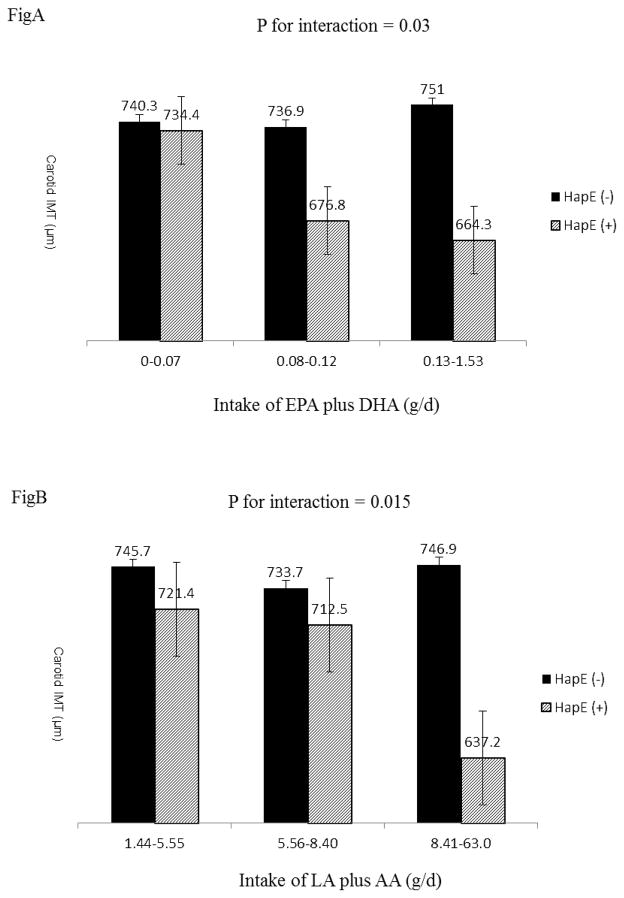Figure 1.
Interactions between HapE and dietary intake of n-3 fatty acids (Fig A) or n-6 (Fig B) fatty acids on carotid IMT. It shows that an increased intake of n-3 and n-6 fatty acids was associated with a decrease in IMT among HapE carriers, but not noncarriers. In addition, there seems to be a dose-response relationship between dietary intake and IMT among HapE carriers, but not noncarriers. The difference in IMT between HapE carriers and noncarriers was statistically significant in the highest tertile of both n-3 fatty acids (p=0.02) and n-6 fatty acids (p=0.01), but the difference was nonsignificant in the lowest and middle tertiles. All interactions were adjusted for alcohol consumption, physical activity, total caloric intake, BMI, use of statins and Framingham risk score. The interactions shown in Fig A and Fig B were adjusted for each other.

